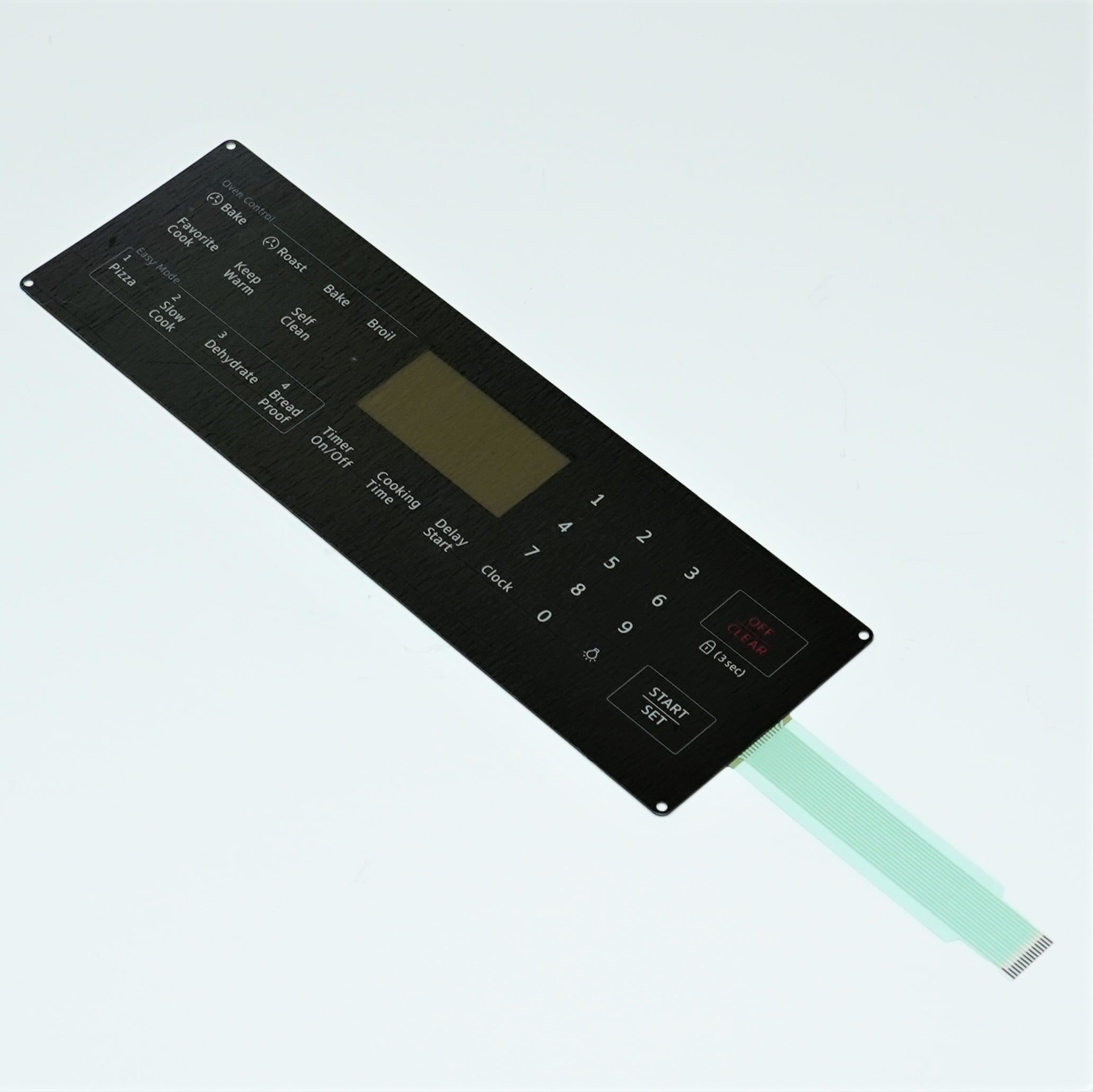Choosing the Right Membrane Switch for Your Business Needs
Wiki Article
Comprehending Membrane Layer Changes: The Key to Reliable and long lasting Controls

What Are Membrane Layer Buttons?
Membrane switches are an advanced option in the world of interface technology, incorporating capability and layout flawlessly. These tools serve as a user interface in between customers and electronic systems, integrating several components into a small style. Commonly created from adaptable, slim layers of products, membrane layer buttons are made to reply to touch, enabling users to interact with equipment and digital tools properly.The primary aspects of a membrane layer switch include a printed circuit layer, graphic overlay, and a spacer layer that prevents unintended activation. The visuals overlay can be tailored to mirror brand name identity or individual preferences, improving aesthetics while ensuring use. Membrane layer buttons are generally used in different applications, including medical devices, consumer electronics, and industrial tools, owing to their durability and resistance to ecological variables such as dampness and dirt.
One of the essential advantages of membrane layer buttons is their capacity to hold up against wear and tear, making them optimal for high-traffic atmospheres. Furthermore, they are light-weight and need very little space, enabling innovative layouts in item advancement. Generally, membrane layer changes stand for a efficient and practical choice for contemporary digital interfaces, weding innovation with user-centric design concepts.
How Membrane Layer Switches Job
The operation of membrane changes joints on a simple yet efficient device that converts user input into digital signals. When a user presses the switch, the top layer flaws, permitting a conductive element in the circuit layer to make contact with a matching conductive pad on the bottom of the visuals overlay.The design of membrane switches can vary, however they usually incorporate domes or tactile elements to offer comments to the customer, boosting the total experience - membrane switch. The products used in membrane switches, such as polyester or polycarbonate, add to their toughness and resistance to ecological variables, consisting of dampness and dirt. Furthermore, the printed circuits are generally encapsulated, which secures them from deterioration gradually.
Benefits of Membrane Switches

Furthermore, membrane switches are understood for their longevity. Constructed from robust materials, they are resistant to dust, moisture, and physical wear, which considerably prolongs their life expectancy compared to conventional mechanical switches. This toughness makes them specifically appropriate for high-traffic settings and applications requiring longevity.
An additional substantial benefit is the simplicity of cleansing and maintenance. The smooth surface area of membrane switches over reduces dust build-up and is commonly invulnerable to spills, making them excellent for settings that call for frequent sanitization.
Additionally, membrane switches offer a streamlined account, bring about a thinner layout that can be integrated into various tools without including bulk. This feature not just improves the aesthetic appeal yet likewise adds to a this content much more ergonomic product design.
Applications of Membrane Layer Switches
Straightforward and flexible, membrane buttons discover applications across a large range of industries, consisting of medical tools, customer electronics, and commercial devices. In the clinical area, these switches are indispensable to gadgets such as analysis devices, patient surveillance systems, and infusion pumps, where integrity and simplicity of cleaning are essential. Their capability to maintain and hold up against severe settings functionality makes them excellent for such applications.
In customer electronic devices, membrane layer buttons are utilized in items like microwaves, washing makers, and remote controls - membrane switch. Their smooth layout allows for user-friendly interface, improving the general customer experience while offering longevity and resistance to tear and use
Commercial tools also benefits from membrane layer buttons, particularly in control panels for machinery and automation systems. These switches use defense versus dirt and moisture, guaranteeing constant efficiency in tough settings. Their adjustable functions enable makers to customize them to discover this info here details functional demands, boosting performance and capability.
Picking the Right Membrane Layer Switch Over
When picking a membrane layer button, it is important to take into consideration different aspects that influence performance and viability for particular applications. The key factors to consider consist of environmental problems, tactile responses, durability, and design requirements.
First, assess the operating environment; switches revealed to moisture, chemicals, or extreme temperatures call for particular products to ensure longevity and capability. Next, review the need for responsive feedback. Depending upon customer interaction, some applications may profit from a responsive reaction to confirm activation, while others may like a non-tactile style for visual reasons.
Toughness is another important factor; membrane switches ought to be designed to hold up against regular usage, effects, and abrasion. Make certain the selected button can withstand the expected lifecycle, especially in high-usage circumstances.

Verdict
To conclude, membrane switches over act as crucial components in the style of resilient and trustworthy control systems throughout various industries. Their compact style, incorporated with durable building and construction and customizable functions, boosts individual communication while making certain long life sought after atmospheres. The versatility of membrane switches permits tailored services that meet certain operational needs, reinforcing their value in contemporary innovation. As markets remain to advance, the significance of incorporating efficient membrane button services can not be overemphasized.
Membrane switches represent a critical aspect of contemporary interface style, mixing functionality with strength in various applications.Membrane switches are an advanced remedy in the world of customer interface technology, combining capability and layout perfectly. Generally built from flexible, thin layers of products, membrane switches are made to react to touch, enabling users to communicate with equipment and electronic devices successfully.
The design of membrane layer switches can differ, however they often include domes or tactile elements to provide comments to the user, enhancing the general experience.In final thought, membrane layer switches over offer as vital elements in the layout of reputable and durable control systems across different markets.
Report this wiki page